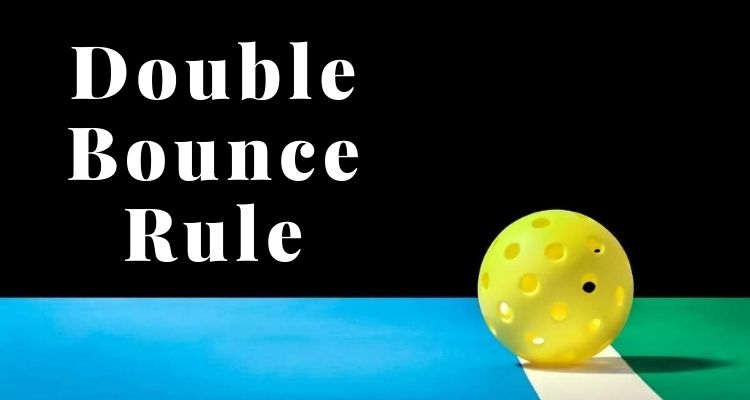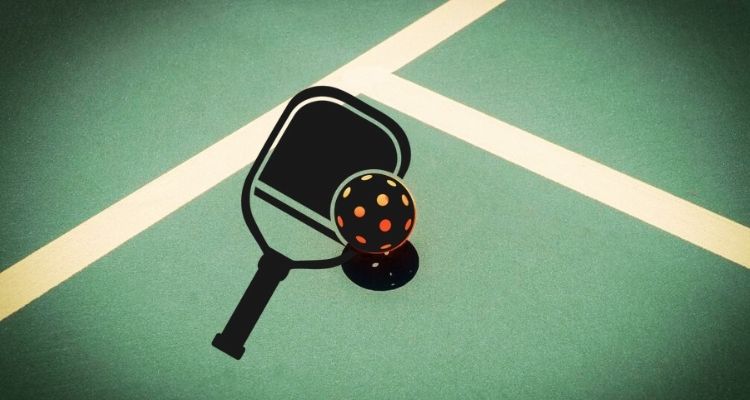Pickleball is a sport that combines elements of tennis, badminton, and table tennis. It is played on a court with a net, paddles, and a plastic ball with holes. One of the most important rules of pickleball is the two-bounce rule, also known as the double-bounce rule. This rule states that the ball must bounce once on each side of the net before players can hit it in the air, or volley it.
This rule applies to the serve and the return of serve, and it helps to create longer rallies and prevent aggressive shots at the net. But what is the origin and purpose of this rule? How does it affect the strategy and skill of the game? And how can players master it and avoid common mistakes? In this article, we will answer these questions and more, and provide you with some tips and tricks to improve your pickleball game with the two-bounce rule.

What’s the Difference between Two-Bounce and Double-Bounce?
Okay, let’s clear things up. The two-bounce rule and the double-bounce rule may sound similar, but they are as different as pickleball is from ping pong! The only thing they have in common is the number 2.
The two-bounce rule requires the ball to bounce once on each side of the court after being served and before the third shot. It’s all about keeping things fair and preventing any sneaky serving and volleying advantages. However, if the ball bounces twice on the same side within a rally, it’s an immediate dead ball due to the double-bounce fault rule. Talk about a game-changer!
Why is There So Much Confusion?
It’s no wonder people get mixed up with all these rules. The term “double bounce” used to refer to two different things within the game until 2018 when the two-bounce rule took its place. So, even though the two-bounce rule is technically correct, many still refer to it as the double-bounce rule due to its historical context.
But fear not, the USA Pickleball rulebook has officially set things straight. The two-bounce rule is section 7.A., while the double-bounce rule is section 7.E. Different rules, different meanings! Let’s hope this makes things a bit clearer.
How to Play with the Two-Bounce Rule?
Alright, time to get into the nitty-gritty of the two-bounce rule. During the first three shots of a rally, the rule comes into play. The serve must bounce within the diagonal service area on the first shot. The receiving team then returns the ball to the serving team, and the serving team can send it back after it bounces for the third shot. Easy-peasy, right?
Now, here’s the catch. Only the first and second shots are subject to the bounce requirement. From the third shot onwards, the receiver can volley or hit groundstrokes. Let the games begin!

Why Does the Two-Bounce Rule Exist?
Curious about the reason behind this rule? Well, the two-bounce rule reduces the advantage of serving and volleying and makes pickleball a fairer game for both serving and returning sides. It ensures that serving is the primary way to earn points and prevents the third shot from being an unfair advantage. Say goodbye to quick-ending rallies and hello to the thrill of dink rallies!
FAQs
Can the Second Bounce Be in the Kitchen?
Absolutely! The second bounce can land in your opponent’s kitchen. It’s fair game as long as it’s on the serving side’s playing area. But beware, the first bounces cannot land in the kitchen, including their lines. Those are considered faults. The kitchen may be a bit confusing, but it adds an extra layer of strategy to the game!
What Is an Illegal Hit in Pickleball?
When it comes to serving, remember to keep it upwards. The server’s arm should move upward when striking the ball. Hitting from above or from the side is a big no-no! Keep that paddle below the level of your navel for a legal hit. Safety and fairness first!
What is the Two-Bounce Rule in a sporting context?
The Two-Bounce Rule is a regulation in certain sports, particularly in table tennis or ping pong, where a ball must bounce on both sides of the net (once on the server’s side and once on the receiver’s side) before a point is awarded. This rule ensures a fair exchange of play and gives the receiver a chance to respond to the serve.
Is the Two-Bounce Rule the same as the Double double-bounce rule?
No, the Two-Bounce Rule is not the same as the Double Bounce Rule. The Two-Bounce Rule pertains specifically to the requirement of the ball bouncing on both sides of the net during a point in certain sports like table tennis. On the other hand, the Double Bounce Rule may refer to a different regulation, such as in certain informal or casual games where players agree that the ball must bounce twice on the ground before a point is scored.
Wrap Up
With its unique double-bounce rule, pickleball manages to keep us on our toes. Even though it’s now officially known as the two-bounce rule, the history and double meaning are still confusing. But hey, at least you’re in the know now!
So, go out there and conquer the court with your newfound pickleball knowledge. And remember, even though they were technically correct, let’s give a little chuckle to all those players who used the “double bounce” rule in the wrong year.




